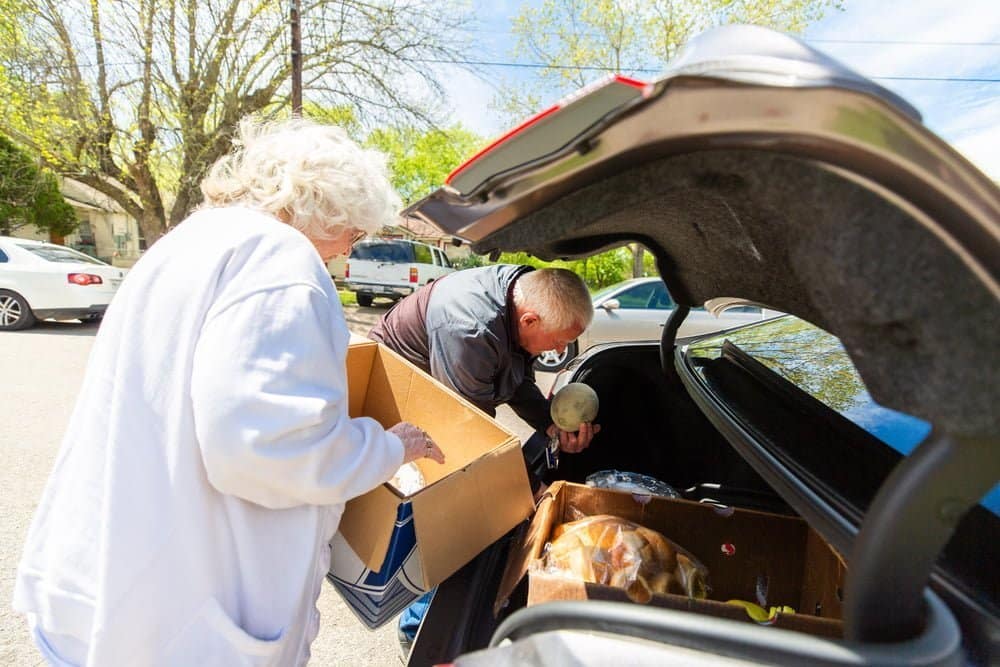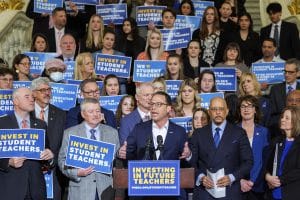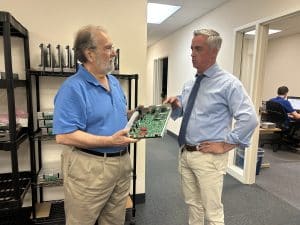“I still can’t believe I get this. You know how it is – trying to get your life back. [SNAP] is a whole different ball game,” said Doylestown’s Claire Williams, describing the way she felt when she realized she needed help – and then got some. A self-employed woman with a small business shuttered by COVID, she struggled to feed her two pre-teen children until she humbled herself and applied for assistance. “It was very embarrassing at first. I’ve just been on it for a year. But it’s like night and day. I know I worked my whole life. But to get this help … feeding my kids. I could just cry.”
The $600 to $700 Williams received monthly from the Supplemental Nutrition Assistance Program (SNAP) has filled some of the holes left when her business closed. She’s taken other jobs but none that adequately compensated for the costs of food and health care.
READ: From Farm To Table, Bucks County Opportunity Council Delivers
“Having this access to food and having insurance – it’s heaven sent to get me back on my feet again,” she told the Bucks County Beacon.
And that’s just what the expanded federal program known as the CARES Act (Coronavirus Aid, Relief, and Economic Security Act) intended. Initially passed in 2020, members of congress anticipated that hard working individuals would need a helping hand. When people like Williams got to the end of her savings, congress assured her and others like her, that there’d to be a place to turn.
“Over the past few years, I’ve sold things. I sold my engagement ring. But I could never let the house go,” Williams added
When she feared she was getting that desperate, Williams applied for help.
Williams’ list of needs has changed since she first received SNAP and health care benefits. As the hairstylist rebuilds her salon business, she’ll eventually wean herself from the lifeline she relied upon so heavily over the past year.
“I’m updating them this month. I know my food stamps will be cut. But I’m very good with money. I feel so fortunate. We live in a great country,” said Williams.
The CARES Act provided the helping hand many folks like Williams needed. But for others, folks who didn’t need a passing or temporary helping hand but something more permanent – the extra food budget became an inflation busting tool. Supplemental SNAP benefits helped elders and others on a fixed income better tolerate rapidly increasing prices at the grocery store. For the economically disadvantaged, this month’s expiration of increased assistance and lower barriers is a nightmare looming on their horizon.
According to the Food and Nutrition Service of the U.S. Department of Agriculture, the recently passed Consolidated Appropriations Act, “ends emergency allotments after the February 2023 issuance. This means by March 2023, all SNAP households’ benefits will return to normal amounts, without the added supplement.” Translation? This month, millions of SNAP-eligible Americans are losing the additional dollars intended to help folks withstand the pressures of the pandemic. And while some states terminated the additional public assistance early, others, like Pennsylvania, ran out the clock on the benefits: meaning those cuts happen now.
Additionally, some individuals, part- and full-time students as well as adults 18 to 49 years of age without disability or dependent children, will lose 100 percent of their SNAP eligibility 30 days after the federal public health emergency (PHE) ends in May.
Politically, many Republicans applaud the federal cost cutting measures that accompany the return to pre-COVID eligibility and benefit criteria. Certainly, the legislatures of the 18 red states that already cut back on support to those in need, agree that supplemental nutrition is no longer necessary. But others – those who work directly with the hungry and the poor – do not.
Pastor Robert Brown, Jr. of the Bible Evangelical Methodist Church in Bristol runs a food bank and delivers meals to hungry people without transportation. “I see, every year, more of an impact food insecurity has on the people coming in.” For this reason, Pastor Brown imposes no restriction on the people who seek help. “If you’re in need, we will help. Food is essential. And we’re not talking about people using government assistance to buy new furniture. We have grandmothers feeding their grandchildren.”
The seniors receiving Social Security – those grandmothers feeding themselves and their family members – may be the most impacted by the elimination of the pandemic supplemental assistance. According to Kathy Bennett, director of the Bucks County Area Agency on Aging (AAA), adjustments made to Social Security payments and SNAP protocols aren’t lining up for those on fixed incomes. Inflationary pressures triggered the largest increase in Social Security in more than 40 years. “That SSI increase reduced SNAP eligibility,” said Bennett, who went on to explain that the floor didn’t change for nutrition assistance. “Eligibility for SNAP did not rise.” Consequently, people are losing their marginally increased income as they struggle to offset the loss in food assistance.
Inflation is another factor that weighs heavily on the budget of the elderly, disabled and low income. “The emergency allotment positively impacted people’s ability to pay for food,” added Bennett. On average the $95 increase per household that the pandemic SNAP supplements provided offset the 10 percent inflation rate on groceries and other items. It wasn’t just the cost of food that went up. Bucks county utilities are expected to rise 38 percent, further squeezing tight household budgets.
Pastor Brown knows that hunger impacts a lot of people in his region. And though the pastor doesn’t need collaboration, the numbers from the PA Department of Human Services (DHS) bely the notion that people don’t need any extra help.
Brandon Cwalina, press secretary for The Pennsylvania Department of Human Services, confirms that “more than 1.9 million Pennsylvanians receive SNAP benefits … [with] 43,372 SNAP recipients in Bucks County.” And how many seniors, like the ones Pastor Brown delivers to? Cwalina puts Bucks County number at 9,653 of the commonwealth’s total number of 401,000 seniors receiving food assistance.
Pastor Brown knows that eliminating nutritional assistance for any reason means he’ll just have to keep his food bank open and keep on delivering groceries.
“I’ll do this as long as it’s necessary. I delivered food to one family for the first time and the children come out of the house shouting, ‘Look Grandma, we got cereal. We got juice,’” said Pastor Brown. “They were so excited. Except, it wasn’t barbie dolls I brought those kids. It was food.”
Resources:
Applying for Benefits via PA Department of Human Services
Bucks County Area Agency on Aging







